
Interior Paneling Products
Choosing your interior paneling products is an important decision when it comes to interior design and will affect the overall feel of your living/working environment. Each wood option out there will affect the look, feel and ambiance to its surrounding area. Bear Creek Lumber can offer softwoods such as Western Red Cedar, Alaskan Yellow Cedar, Port Orford Cedar, California Redwood, Douglas Fir / Larch, Ponderosa Pine, and Hemlock, along with hardwoods such as Mahogany, Sapele, Ipe & Teak.
After you have determined which specie of wood to use for your interior paneling, you will then need to determine which pattern you would like to use to accentuate your visual desires. The most common pattern that we see for interior use is going to be a V-Joint pattern. Other common patterns we often see are going to be center match or nickel gap.
Softwood Interior Paneling Products
Most commonly with interior paneling the products supplied are going to be supplied with a smooth texture, but a resawn texture can be provided if a customer is looking for more of a rustic appeal. We can offer interior paneling in 1/2″, 5/8″, 11/16″ and 3/4″ net sizes and 3″, 4″, 6″ & 8″ nominal widths. Other sizes can be developed through our specialty milling process if required.
Most of our softwood paneling options are going to be available in both clear and knotty grades, while our hardwood options are generally only available in clear grades. Clear products give a finer appearance and work well in modern and upscale projects. Knotty materials will give the walls more character and a bit of a rustic appeal. Knotty materials are going to be more economical than clear, generally being about half the overall cost.
Western Red Cedar

Western Red Cedar (WRC) is one of the most popular species of lumber to use for interior paneling. It has beautiful colors and a wide range of options for visual specifications. This species is provides a wonderful interior atmosphere and you can use the deep chocolate brown hues of slowly-grown heartwood to highlight a light colored carpet or a solid hardwood flooring such as Ash, Maple, Hickory, Douglas Fir or Oak.
This species's slow growth and natural oily extractives are responsible for its decay resistance and its rich coloring, which ranges from a light straw color in the sapwood to a reddish pink in the heartwood. It is a stable wood that seasons easily and quickly, with a very low shrinkage factor.
Alaskan Yellow Cedar

AYC paneling is produced from medium sizes tree, with a thin bark. It is slow growing with high disease and decay resistance, as well as oils that make it very aromatic. It grows from Alaska south to Oregon with the largest areas of growth in British Columbia and SE Alaska.
It is naturally resistant to rot, decay, insect damage and, in saltwater applications, to marine borers. Alaskan Yellow Cedar is considerably harder than most commercially available softwoods. It resists splitting and slivering, and it is highly resistant to wear.Port Orford Cedar
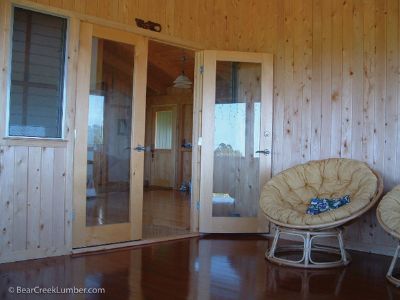
The natural beauty and decay resistance of Port Orford Cedar make it ideal for decking. It is also one of the strongest cedars with strength values comparable to Douglas Fir. Beauty, strength and durability make Port Orford Cedar very versatile.
This hard-to-find aromatic softwood can bring light tones into your interiors and effectively create luminous wood paneled spaces. Check out these pictures of a room with Port Orford Cedar interior paneling.Douglas Fir
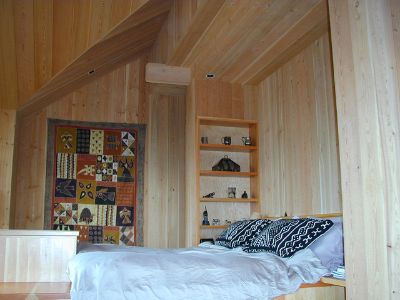
Douglas fir paneling has a classic, warm look. It's a versatile product that can be used to enhance walls or ceilings. And, while it's typically thought of as good for achieving a rustic cabin look, clear vertical grain paneling can look quite contemporary and glamorous. Whether it's beaded, beveled or square-edge you want, Bear Creek Lumber can provide it.
Fir paneling varies widely in weight and strength. When lumber of high strength is needed for structural uses, selection can be improved by applying the density rule. This rule uses percentage of latewood and rate of growth as they affect density. For equivalent knot sizes, the higher density generally indicates stronger wood.Ponderosa Pine
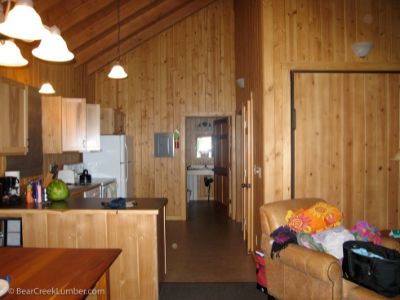
Ponderosa Pine is resistant to changes in humidity, so it's ideal for projects requiring close-fitting joints. This species is abundantly available and reasonably priced, making it an excellent choice for your next tongue and groove paneling project.
Pine and stained blue pine gallery. All woods shrink and swell to some degree as their moisture content fluctuates with atmospheric conditions. However, Ponderosa is relatively unaffected by changes in humidity after drying, making it valuable for work that requires close-fitting joints.Clear Grade Hemlock
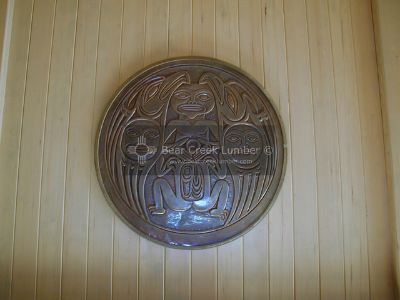
Hemlock is a blond wood with beautiful texture and grain. Its basic hues are flaxen, and clear lumber means the wood is free of any dark knots. Many designers love hemlock’s light color and select a clear, low sheen finish to bring out its natural warmth. AND hemlock is extremely flexible for visual purposes.
** NOTE When Clear Grade lumber has been subjected to drying conditions after manufacture, causing an appreciable loss in moisture content, an allowance must be made for the resulting shrinkage. Make sure you specify the correct size for your project.California Redwood

Redwood paneling is flat out gorgeous, as you can see. It brings a rich color to any room and enhance any design. It also has minute cell structure with thousands of air-filled cavities accounts for Redwood’s thermal insulation values
This paneling option is lightweight and fairly easy to install, resistant to rot, and can be fire resistant as well, if properly treated. Additionally, redwood siding has a natural pest-repelling quality similar to cedar. With proper care and maintenance, redwood siding will last for many decades.
Mahogany
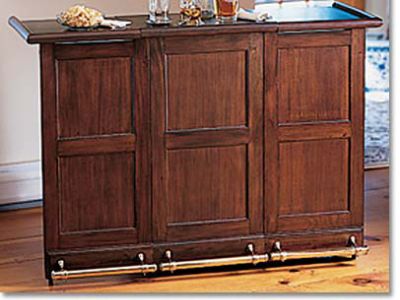
Mahogany hardwood paneling comes in a Heartwood which can be Reddish, pinkish, salmon colored, or yellowish when fresh. The color ends up deepening with age to deep rich red or brown.
These are distinct from the yellowish or whitish sapwood. The luster is high and golden and the texture rather fine to coarse. The grain goes from straight to ropey, wavy or curly, often with an attractive figure.
